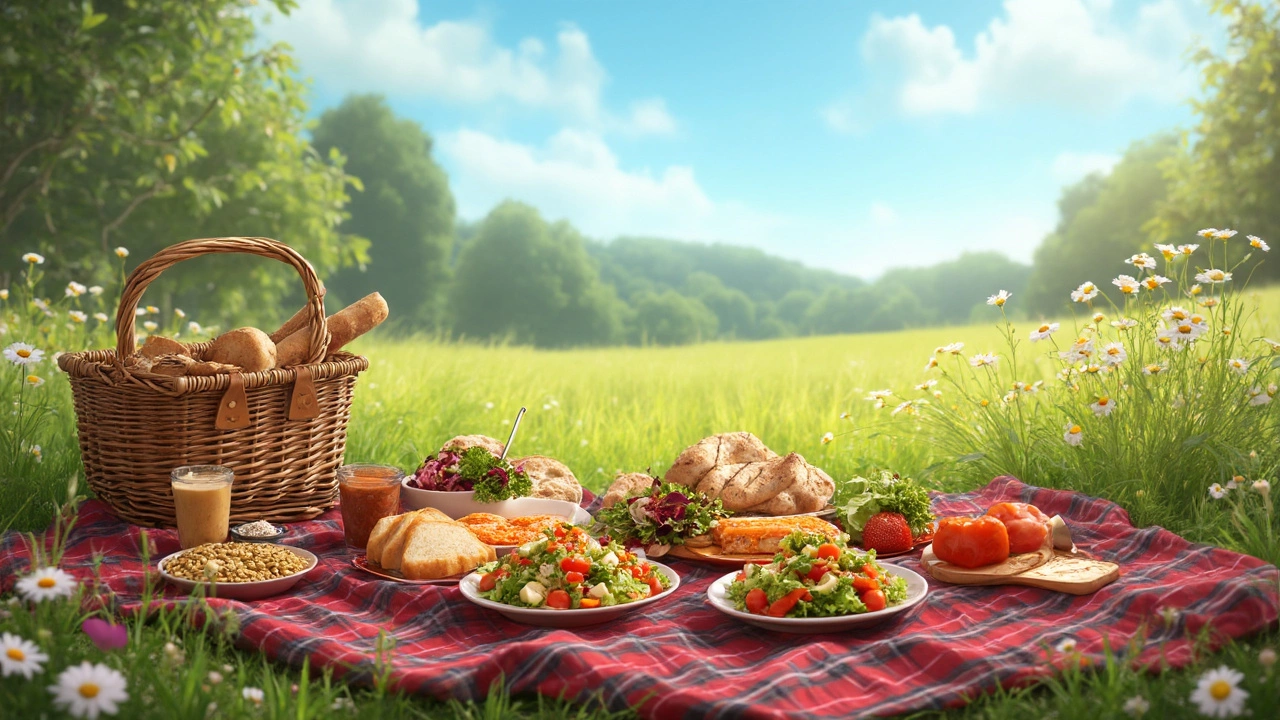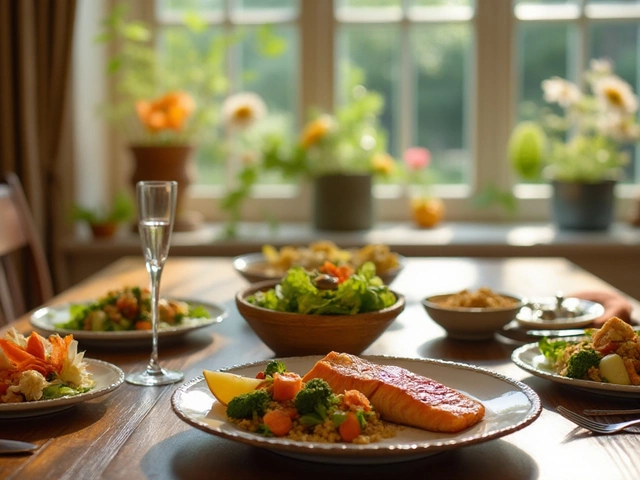So, you're on a mission to discover the healthiest possible meal. Good call! It's not just about eating less; it's about eating smart. Start with whole grains. Think brown rice, quinoa, and oats. These grains pack a punch with fiber, making you feel full and happy while keeping your blood sugar steady.
Next, let's talk protein—the building block of any great meal. Opt for lean sources like chicken, fish, or plant-based options such as beans and lentils. Not only do they help with muscle repair, but they also keep you satisfied longer than simple carbs.
The Power of Whole Grains
Whole grains are like the unsung heroes of the healthy meal world. Unlike their refined counterparts, whole grains keep all three parts of the grain—the bran, germ, and endosperm—intact. This means more nutrients, more fiber, and more flavor. It's like you're getting the whole package, literally!
Fiber is the superstar here. It not only helps keep things moving smoothly through the digestive system, but it also plays a huge role in maintaining steady blood sugar levels. If you're aiming for a balanced diet, whole grains are a must-have.
The Nutritional Punch
Whole grains are rich in essential nutrients like iron, magnesium, and B vitamins. These nutrients are crucial for energy production and overall body function. Let's face it: nobody wants to drag themselves through the day without some real oomph!
Common Whole Grains
- Brown Rice: A versatile base for any meal.
- Quinoa: A protein-rich grain that cooks up in a flash.
- Oats: Not just for breakfast; they're great in meatloaf or even pancakes.
By including a variety of these grains in your diet, not only are you making your meals more interesting, but you're also covering more nutritional bases. This can lead to better health outcomes, from a reduced risk of heart disease to improved digestion.
A Look at the Fiber Content
| Grain | Fiber per Cup (cooked) |
|---|---|
| Quinoa | 5.2g |
| Brown Rice | 3.5g |
| Oats | 4g |
Integrating these whole grains into your meals is a straightforward step towards a healthier lifestyle. By prioritizing these grain choices, you're not only elevating your meal plan but also contributing to improved overall well-being.
Optimal Protein Choices
Protein is your best friend when it comes to building the healthiest meal. It's not just for bodybuilders; it plays a key role in repairing tissues, making hormones, and keeping you feeling full.
Lean Meats and Fish
Chicken and turkey are classic options for a reason. They're versatile, low in saturated fat, and high in protein. Grilled salmon or other fatty fish like mackerel are excellent too. They bring in omega-3 fatty acids, great for heart health.Plant-Based Picks
For those going more plant-focused, beans and lentils are fantastic. They not only pack a protein punch but also offer fiber, which is great for your gut. Tofu and tempeh are other plant-based wonders. They're adaptable to any flavor profile, which makes them a kitchen staple.Dairy and Alternatives
Greek yogurt and cottage cheese offer a burst of protein. If you're dairy-free, look for fortified plant-based yogurts and milks that give you similar nutritional benefits.| Protein Source | Protein per 100g |
|---|---|
| Chicken Breast | 31g |
| Salmon | 25g |
| Lentils | 9g |
| Tofu | 8g |
Remember, the key is variety. Mixing up your protein sources not only keeps meals interesting but also ensures you get a broad spectrum of amino acids. So, switch it up and enjoy!

Loading Up on Veggies
When it comes to building the healthiest possible meal, veggies are the real MVPs. They're loaded with vitamins, minerals, and antioxidants while being low in calories. This makes them perfect for adding volume and color to your plate without risking overeating.
Why Veggies Matter
Why should veggies be a star in your meal? For starters, they're packed with fiber, which keeps your digestion in check and helps maintain a healthy weight. Plus, veggies like broccoli, spinach, and bell peppers come with vitamin C and other antioxidants that support your immune system and skin health.
Choosing the Right Veggies
Aim for variety to get a full spectrum of nutrients. Dark leafy greens like kale and spinach are nutrient powerhouses. Bright reds and oranges, such as carrots and tomatoes, offer beta-carotene which is great for your eyes. Reds, purples, and blues like eggplants and beets have anthocyanins, known for their anti-inflammatory properties.
Quick Tips to Add More Veggies
- Start every meal with a salad. Give your body a fiber boost and prevent overeating by filling up with greens first.
- Mix vegetables into your meals. Throw some peppers and onions into your omelet or mix shredded zucchini into pasta dishes for extra nutrition.
- Keep frozen veggies handy. They're often just as nutritious as fresh ones and can be easily steamed or stirred into meals.
Fun Veggie Facts
Did you know that one cup of broccoli provides over 100% of your daily vitamin C? Or that spinach has more iron than many meats? Including a variety of vegetables in your diet ensures you receive all the essential nutrients your body needs.
So there you have it. Loading your plate with vegetables is a game-changer for anyone looking to enjoy the healthiest meal. With endless options, there's no reason not to embrace these colorful powerhouses.
Adding Healthy Fats
Healthy fats are the unsung heroes of a balanced diet. They don’t just make your meals tastier; they play a crucial role in supporting heart health, boosting brain function, and even helping with vitamin absorption. So, let's see what's worth adding to your plate.
Go for Good Fats
Start with avocados. They're full of monounsaturated fats that can actually help lower bad cholesterol levels. Plus, they’re super versatile—great in salads, on toast, or even in a smoothie!
Then there are nuts and seeds—think almonds, walnuts, chia, and flaxseeds. They're not only delicious, but they also provide a solid dose of omega-3 fatty acids, which are critical for reducing inflammation in the body.
Oils to Include
Let's not forget about cooking oils. Extra virgin olive oil is a staple in any healthy meal. It’s loaded with antioxidants and provides a delightful flavor. If you’re feeling adventurous, try coconut oil or flaxseed oil for different health benefits and flavor profiles.
Fats at a Glance
Here's a quick look at some top healthy fat sources:
- Avocados
- Nuts (especially almonds, walnuts)
- Seeds (chia, flax)
- Extra virgin olive oil
- Coconut oil
- Fatty fish (like salmon and mackerel)
Moderation is key, though. While these fats are good for you, they’re also calorie-dense. Incorporate them wisely in a balanced diet to keep everything in check.
Got it? Awesome! Now you’re well on your way to crafting meals that are not just healthy but downright delicious.





